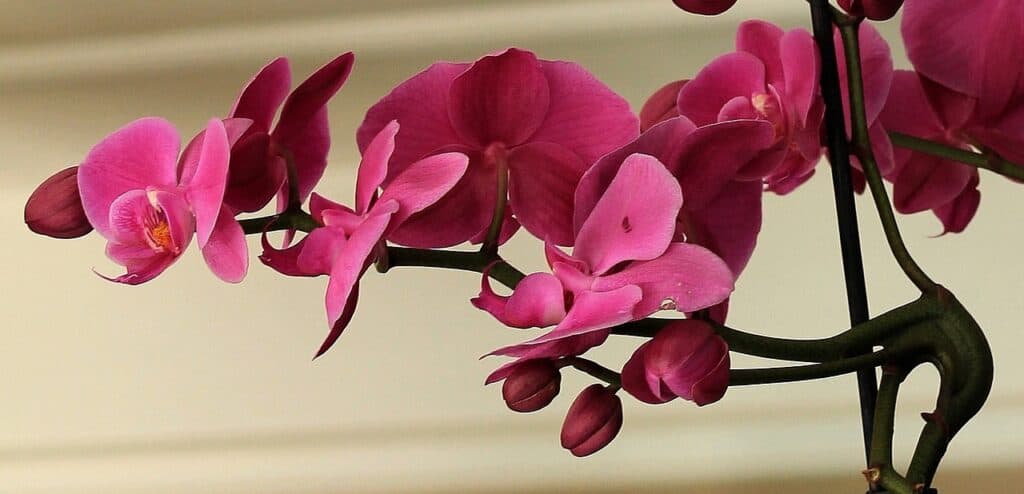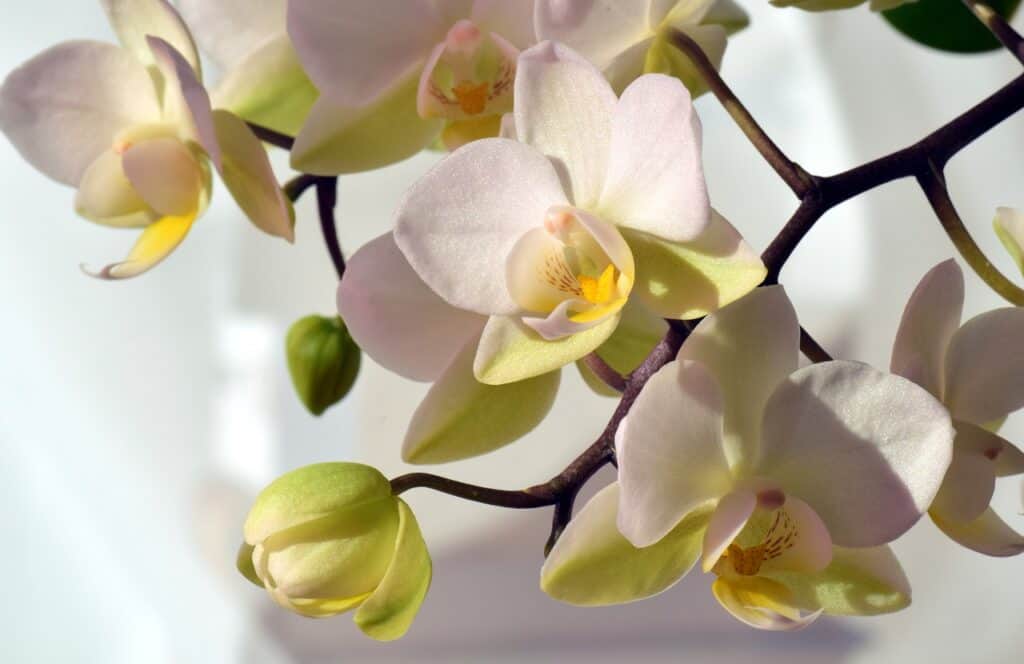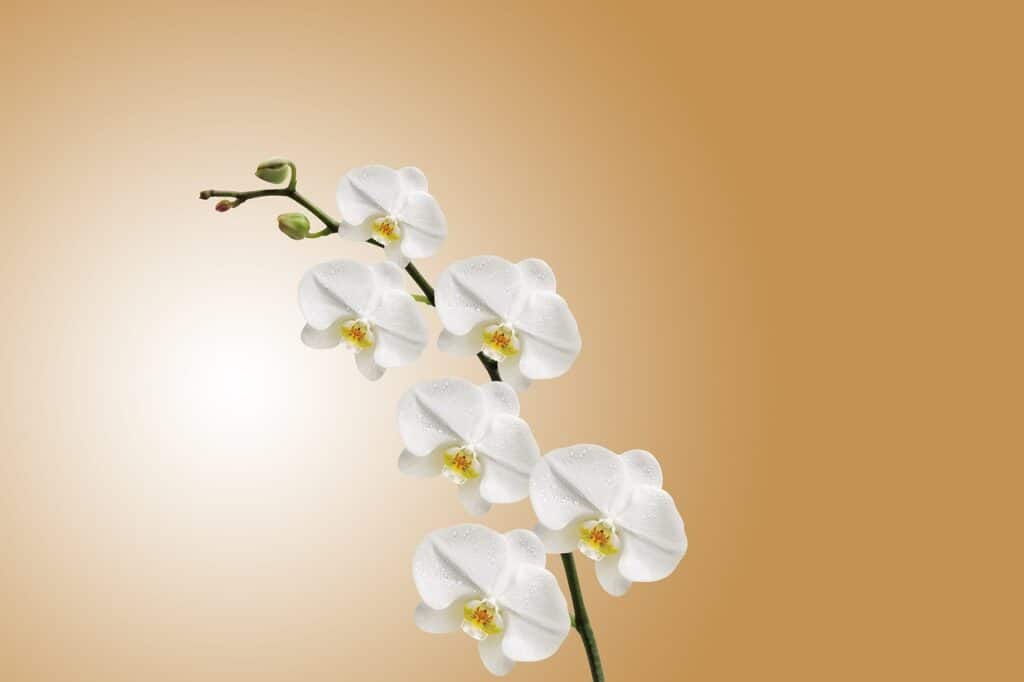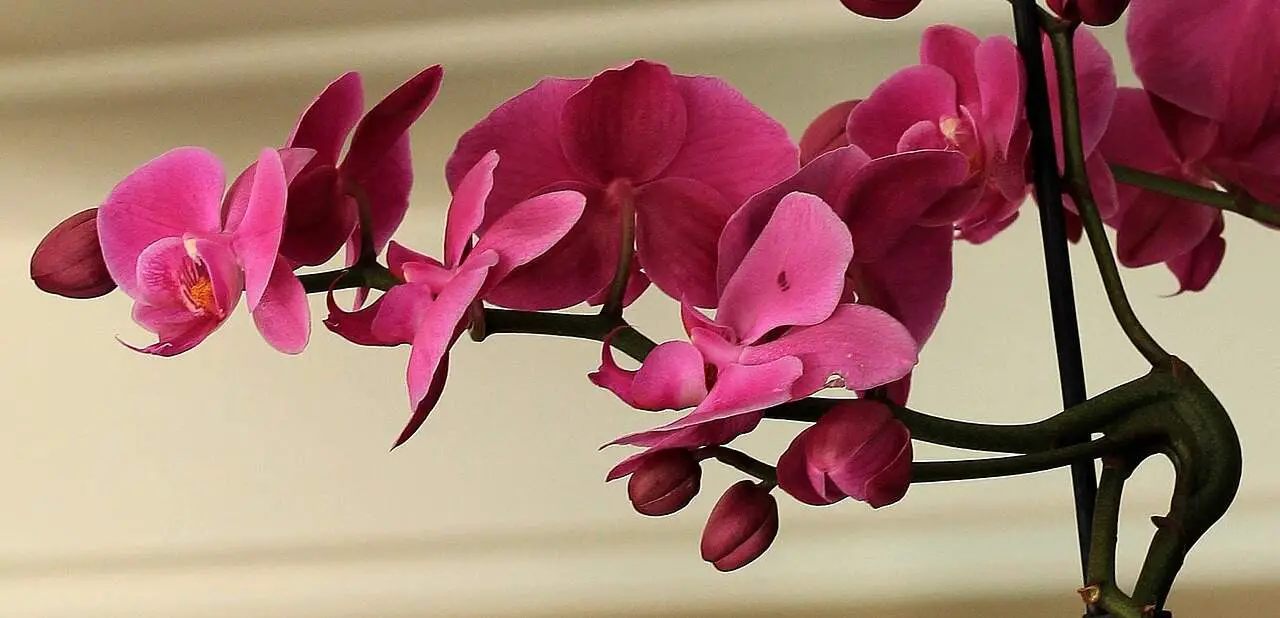Orchids, known for their enchanting allure and exotic beauty, have captivated the hearts of plant enthusiasts worldwide. One of the most critical aspects of their successful cultivation is choosing the ideal growing medium. In this comprehensive guide, we will embark on a journey through the diverse world of orchid-growing mediums, exploring a plethora of options to ensure your orchids not only survive but thrive. Whether you’re an experienced orchid grower or just beginning your orchid journey, understanding the myriad growing mediums available is essential for nurturing healthy and resplendent orchids.

The Importance of Orchid Growing Mediums
The choice of growing medium plays a pivotal role in the well-being of your orchids. Orchids, primarily epiphytic plants, originate from diverse environments and climates. When cultivated, replicating these conditions becomes paramount. Orchids demand a growing medium that provides optimal aeration, drainage, and stability for their intricate root systems. Let’s delve into various orchid-growing mediums, each offering a unique blend of benefits:
1. Bark-Based Orchid Mix: Bark-based mixes are revered among orchid enthusiasts for their exceptional performance. Typically, they consist of fir bark, sphagnum moss, and perlite. This combination ensures excellent aeration and drainage, while the size of bark particles can be tailored to suit different orchid types and sizes.
2. Coconut Coir: Coconut coir, sourced from coconut husks, offers an eco-friendly and sustainable choice. It retains moisture effectively while providing good aeration, making it ideal for orchids that require consistent moisture levels.
3. Sphagnum Moss: Sphagnum moss, renowned for its moisture-retaining properties, is often favored for orchids that thrive in higher humidity, such as some Dendrobium species.
4. Semi-Hydroponic (LECA – Lightweight Expanded Clay Aggregate): Semi-hydroponic culture entails growing orchids in a medium of LECA beads or other inert materials. This method ensures exceptional aeration and water retention and is embraced for its simplicity.
5. Tree Fern Fiber: Tree fern fiber, a natural growing medium, offers excellent drainage and aeration. It’s a preferred choice for orchid species that flourish in a less compacted, more naturalistic environment.
6. Perlite and Vermiculite Mix: Perlite and vermiculite, both lightweight and sterile materials, are often used as additives to enhance aeration and water retention when blended with other growing mediums like bark.
7. Hydroton: Hydroton, another hydroponic medium, consists of clay pellets that provide stability and aeration. It is gaining popularity among orchid growers for its unique properties.
8. Osmunda Fiber: Osmunda fiber, derived from the roots of the royal fern, is known for its superb drainage and air circulation. It’s an excellent choice for terrestrial orchids.
9. Charcoal: Charcoal, often activated charcoal or horticultural charcoal, can be added to growing mediums to improve drainage and help prevent root rot.
What Is The Best Medium For Growing Phalaenopsis Orchids?
Phalaenopsis orchids, often referred to as “Moth Orchids,” are among the most popular and widely cultivated orchid species. The best medium for growing Phalaenopsis orchids is a well-draining orchid mix that provides excellent aeration while retaining some moisture. Here are some options:
1. Bark-Based Orchid Mix: A mix primarily composed of fir bark or a combination of different types of bark is a popular choice for Phalaenopsis orchids. It provides good aeration, allows water to drain quickly, and mimics the orchid’s epiphytic habitat. The size of the bark particles can vary, catering to different Phalaenopsis types and sizes.
2. Coconut Coir: Coconut coir, derived from coconut husks, is an eco-friendly and sustainable medium. It retains moisture well while maintaining adequate aeration. It’s suitable for Phalaenopsis orchids that prefer more consistent moisture levels.
3. Sphagnum Moss: Sphagnum moss is known for its moisture-retaining properties. It can be used as a component in the growing medium, especially for Phalaenopsis orchids that require higher humidity.
4. Semi-Hydroponic or LECA (Lightweight Expanded Clay Aggregate): Some growers have successfully used semi-hydroponic culture with LECA beads for Phalaenopsis orchids. This method offers excellent aeration and water retention, making it suitable for certain Phalaenopsis varieties.
It’s important to note that the choice of growing medium for Phalaenopsis orchids may also depend on your specific growing conditions and personal preferences. Proper watering practices are essential regardless of the medium you choose. Additionally, Phalaenopsis orchids should be planted in pots or containers with good drainage to prevent waterlogged roots.
Regular monitoring and adjustment of your watering routine are crucial to ensure your Phalaenopsis orchids receive the right balance of moisture. Remember that Phalaenopsis orchids are adaptable, and finding the best medium for your specific environment may involve some experimentation.

Do I Need Special Soil For Orchids
When it comes to growing orchids, you’ll want to forget about traditional soil. Orchids have unique needs because they’re not soil-dwelling plants. In their natural habitats, orchids cling to trees, rocks, and other surfaces. To recreate these conditions, special growing mediums are used. These mediums are designed to provide the right balance of aeration, drainage, and stability for orchid roots.
Some common orchid-growing mediums include bark-based mixes, coconut coir, sphagnum moss, and even semi-hydroponic setups with LECA beads. These options offer the optimal conditions for orchids to thrive.
Using regular soil can lead to poor drainage and can suffocate orchid roots. So, it’s crucial to choose the right growing medium that matches your orchid’s needs and your local environment. Proper watering practices are also key to keeping your orchids healthy, vibrant, and thriving.
Selecting the Right Orchid Growing Medium
Choosing the best orchid-growing medium is a decision that requires thoughtful consideration. Several factors play a role in making the right choice:
1. Orchid Type: Orchid species have varying preferences for growing mediums. It’s crucial to match the medium to the specific needs of your orchids. For instance, Phalaenopsis orchids often thrive in a bark-based mix, while Dendrobiums may prefer coconut coir or sphagnum moss.
2. Environmental Conditions: Your local climate and the conditions within your home should influence your choice of growing medium. A drier climate might necessitate a medium with good moisture retention, while a humid environment may benefit from a medium that drains efficiently.
3. Watering Habits: Your watering routine is another vital aspect. If you tend to water your orchids less frequently, a mix that retains moisture could be advantageous.
4. Container Type: The type of pot or container you use can also impact your choice of growing medium. Plastic pots, for example, dry out more slowly than clay pots, so your medium should complement the pot material.
5. Expertise and Preference: Your level of experience and personal preference matter. Some growers achieve success with a particular medium due to their expertise and familiarity.
Maintenance and Re-potting:
It’s important to consider the ease of re-potting when selecting a growing medium. Some mediums require less frequent re-potting, while others may demand more frequent attention.

Is Moss Or Bark Better For Orchids?
The choice between moss and bark as a growing medium for orchids depends on the specific type of orchid, your growing conditions, and your watering habits. Bark-based mixes offer excellent aeration and are ideal for orchids like Cattleyas and Phalaenopsis with good-sized roots. On the other hand, sphagnum moss retains moisture well and is suitable for orchids that prefer consistently moist conditions or higher humidity levels, such as some species of Masdevallia and Dracula orchids. Experimentation and attention to your orchids’ specific needs will help you find the best medium for your plants.
Conclusion
Choosing the best orchid-growing medium is a critical decision for orchid enthusiasts. By thoughtfully considering the specific needs of your orchid species, your local environment, and your personal preferences, you can select a medium that strikes the perfect balance between aeration, drainage, and stability. Remember that orchids are highly adaptable, and a bit of experimentation can lead to the ideal medium for your unique orchids. With proper care and the right growing medium, your orchids will not only survive but thrive, gracing your space with their extraordinary beauty. Whether you opt for bark-based mixes, coconut coir, or any other medium, the key is to create an environment where your orchids can flourish and enchant with their stunning blossoms.

